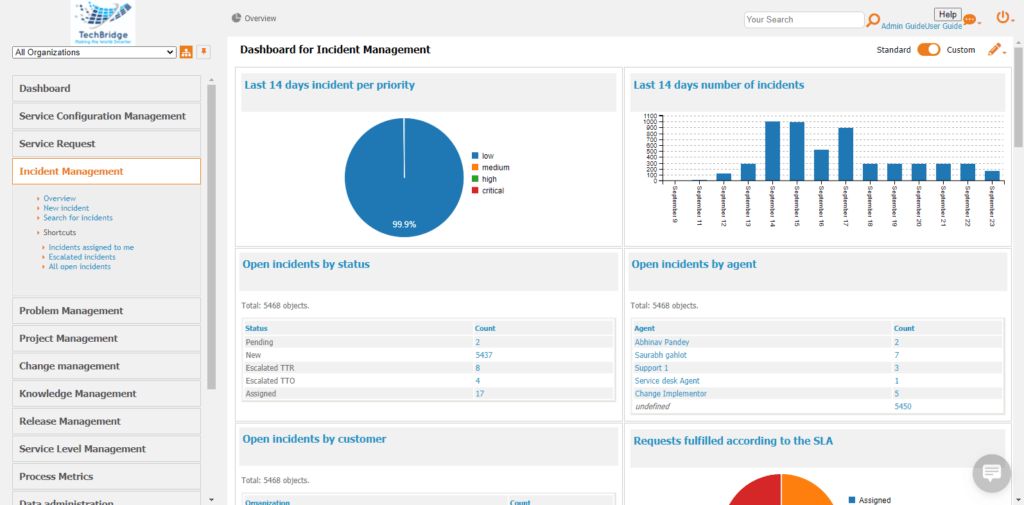Incident Management

Definition:- Incident management is the practice of minimizing the negative impact of incidents by restoring normal service operation as quickly as possible. When a service is disrupted or fails to deliver the promised performance during normal service hours, it is essential to restore the service to normal operation as quickly as possible.
An incident model defines the following:
- Steps to be taken to handle the incident, the sequence of the steps, and responsibilities
- Precautions to be taken prior to resolving the incident
- Timescales for resolution
- Escalation procedures
- Evidence preservation
Incident management has close relationships with and dependencies on other service management processes, including:
Change management: The resolution of an incident may require the raising of a change request. Also, since a large percentage of incidents are known to be caused by implementation of changes, the number of incidents caused by change is a key performance indicator for change management.
Problem management: Incident management, as noted above, benefits from the KEDB, which is maintained by problem management. Problem management, in turn, depends on the accurate collection of incident data in order to carry out its diagnostic responsibilities.
Service asset & configuration management: The configuration management system (CMS) is a vital tool for incident resolution because it identifies the relationships among service components and also provides the integration of configuration data with incident and problem data.
Service level management: The breach of a service level is itself an incident and a trigger to the service level management process. Also, service level agreements (SLAs) may define timescales and escalation procedures for different types of incidents.
Benefits of Incident Management:-
- Improved incident response times: ITIL’s standardized method for incident management ensures that you are providing prompt response, analysis, documentation, ongoing management and reporting of incidents.
- Enhanced incident visibility: With a clear process for logging incidents, you can be sure that everyone in your organization knows what to do if they have an IT issue and what’s being done about it. This helps you determine whether you have the resources to address your problems in a timely manner.
- Improved user satisfaction: No one wants their performance at work compromised because of IT issues, so prompt responses will result in happy users. This process will also help the team responsible for addressing incidents and problems. They have documented guidelines to follow, helping them operate more efficiently and document the work they’ve done.
- Improved productivity: By aligning incident management activities with those in the rest of your organization, you’ll see drastic improvements in its ability to detect and address issues quickly.

